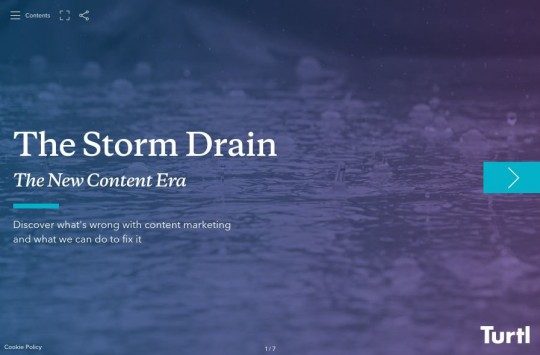Sales and marketing teams are acutely aware of the ‘content is king’ phrase when looking to make an impact online. But, as digital technology continues to take over the world (let’s not get started on AI…), content isn’t just king – it’s the whole darn court. But why should businesses always be on a responsive back foot based on the latest tech trends, innovations, and algorithm updates? Surely it’s time to pause, reflect and refocus on the user?
Research by Forrester says it all: A staggering 77% of organizations have issues with content waste and utilization – with 39% of this waste due to poor quality and relevance of content to the buyer journey. The research also revealed that only 21% of B2B organizations use personas and journey mapping insights to inform content strategy plans, while only 28% analyze content performance by journey stage. It seems with all the latest bells-and-whistles technology offerings, some businesses are intent on saying what they want to say and losing sight of basic user needs. It’s clear there’s a Grand Canyon-sized gap between being aware of the benefits of user-centric content and doing the legwork involved in creating it.
So, how do you create relevant content that resonates and gets results for all involved? Two words: Content design.
What is content design?
Content design is a way of thinking about approaching a project from a user-centered perspective. By putting the needs of the user first, you can create content that is accessible, engaging, and effective in helping users find and understand the information they need. By focusing on user behavior, analytics, and feedback, businesses can gain a clearer view of what content to serve users and when.
It’s not about writing content. It’s about designing it to suit user needs. It’s about what the user needs to know. Content design is not about publishing content that’s focused on what a business wants to say – and it’s definitely not about launching a TikTok channel because you can (and feel like you should). It’s about analyzing user research and journey mapping to design helpful content that resonates at the right time.
And if you practice a user-centric approach to your content, your inbound lead generation will improve quite naturally.
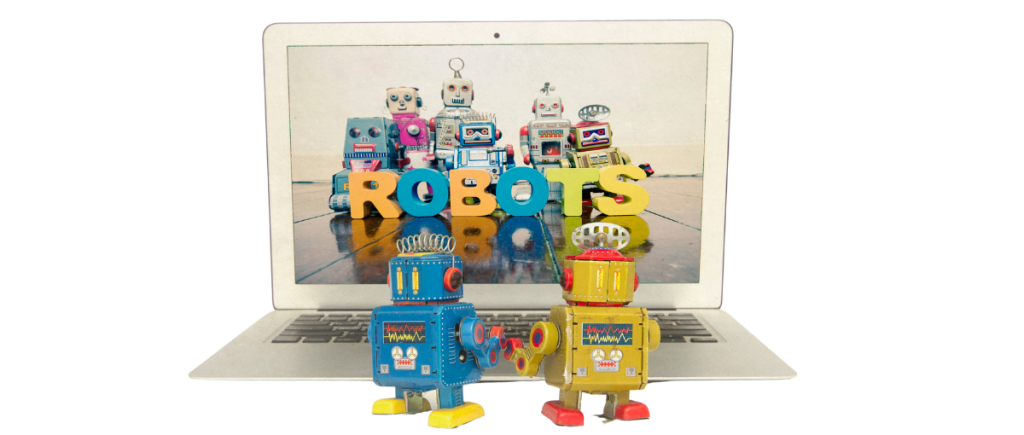
Where did the content design discipline come from?
Quite simply: Sarah Winters. While working at the Government Digital Service (GDS), Winters devised and shaped the content design discipline. After a 10-year career in the UK government, she was appointed the first-ever head of content design at GDS and began by writing the first content strategy for the GOV.UK website. Winters challenged how well lengthy policy content was serving users – and instead, championed the approach of doing whatever it took to serve user needs over anything else.
In a video discussion with Zoomin (a great watch if you can spare 40 minutes), Winters describes content design as not being about producing words, but “producing the thing that services the need”.
After leaving GDS, Winters authored Content Design, a book for anyone creating user-centered content. Winters also launched a consulting business, Content Design London, providing training and consultation in content strategy and content design for governments, charities, and organizations.
What does a content designer do?
A content designer is responsible for applying user-centered design principles to create content that meets user needs and helps them achieve their goals. Content designers often collaborate with other professionals such as user experience (UX) designers, developers, and subject matter experts to create a cohesive and user-friendly experience.
During her talk with Zoomin, Winters shares the tasks and responsibilities of content designers, which include:
- Attending and analyzing research
“You’ll attend research. You won’t do it. You’re not responsible for it. But you will be able to attend it and analyze what’s coming out of that.” This can include user needs, pain points and behaviors to create a story.
- Establishing a bank of user stories and user needs
“We don’t use personas a lot. We might use it in an organization to teach the upper echelons of what’s going on but generally, we don’t use them, because we have a bank of user stories. We can run a whole organization off of one bank of stories. So the press team comes off it, the social media team, the web team, the editorial team, the magazine team… they all run off the same bank of user stories.”
- “Understanding, analyzing and watching that research”
Whether that’s through a stand-up approach, an agile approach – whatever format your team works best in – Winters recommends a “crit” (critique) stage that leads to “producing the thing that services the need. Content design isn’t about producing words.”
- User journey mapping
Buyers go through 7-12 unconscious points before making a conscious decision about anything – “it’s the way our brain works”, comments Winters. It has to start somewhere, so the key is to understand this through journey mapping.
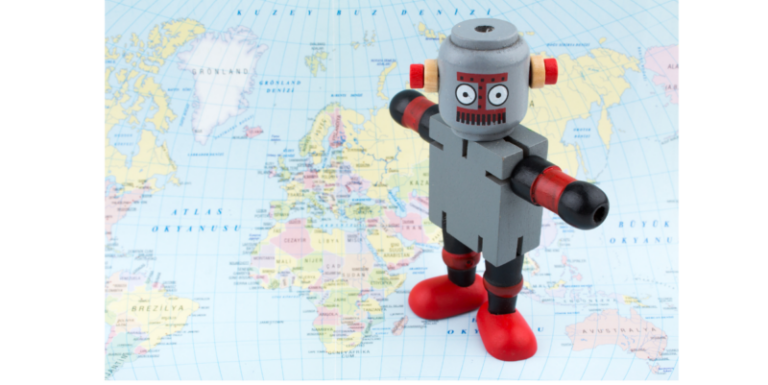
When it comes to knowing what you’re designing, Winters encourages stepping back in the user journey far enough to understand exactly where their trigger point is and asking yourself whether there is something you need to do. That’s when you know what you’re designing – whether it’s a service, a process, or a “bunch of tweets”.
Winters refers to the user journey not beginning from when you hit Google or when you book a product or service. By then, it’s too late. By then they’ve got preconceptions. Your solution could be wrong. Too many organizations fall into the trap of having their solution already and are simply waiting for the problem to arise. This is the wrong order of things – start with the problem, then provide the solution.
- Channel mapping
This is the process of identifying and mapping the various communication channels that a business uses to interact with its customers or target audience. It involves understanding the different touchpoints and channels through which customers engage with the brand, products or services.
The purpose of channel mapping is to gain a comprehensive view of the communication landscape and ensure that the right channels are utilized to effectively reach and engage the target audience. It helps businesses identify the most relevant and influential channels to allocate resources, optimize communication strategies and enhance the overall user experience.
- Empathy mapping (from a language and content perspective)
This stage involves creating a visual representation or framework that helps content designers understand and empathize with their target audience on a deeper level. It provides insights into the audience’s thoughts, feelings, needs and motivations, allowing content designers to develop more relevant and engaging content that resonates with the audience.
- Create content that serves the user
Winters clarifies this point perfectly when describing a time when a health company approached her consultancy about wanting to build a multi-million-pound app. After the user journey map stage, “what they needed was an A4 poster in the doctor’s office.” (Crazy, right?)
Winters describes the three things you can do with content: “reflect, rebut, or re-educate”. By having your user journeys in place, you can decide which one of the three you’re going to do at any point. Pull people along as they go.”
- Share, iterate, send live, track
“It’s what you would expect from a design sprint, we just do it from a content angle”, comments Winters.
An example from this stage includes using data, user testing and feedback to iterate and improve. Good content design is an iterative process that relies on data and user feedback. Content designers track content performance metrics, such as engagement, conversions and user behavior, to make decisions. They also actively seek and incorporate user feedback through questionnaires, interviews, etc., to improve content quality, address user needs and continuously refine the content strategy.
Key terms: What you need to know
User research
Would you build your dream home on poor foundations? Use poor quality materials? Thought not. So, why would you expect great things from your content, if its basic foundations aren’t in place? User research is the foundation of your content strategy. Its valuable insights into the needs, preferences and behaviors of your target audience make it a crucial component of content design. Fail to do it… things will start to sink.
Working with a great user researcher when designing content ensures that the content meets user expectations, aligns with their goals and addresses their pain points – whether it’s data from user interviews, surveys, questionnaires and so on! User research will also provide insights that help designers refine content strategies moving forward.
User journey mapping
Content design all stems from the user journey map. This is a visual representation of the steps and interactions a user goes through while engaging with a product, service or platform. It helps designers understand the user’s experience, emotions and touchpoints at each stage of their journey. A user journey map typically includes various stages such as awareness, research, decision-making, purchase and post-purchase. It also identifies key actions, pain points, motivations and opportunities for improvement along the user’s path.
Content journey mapping
Content journey mapping refers to the process of mapping out the content strategy and touchpoints throughout a user’s journey within a marketing or sales funnel. It involves creating and aligning content that guides and nurtures users at each stage of the funnel, from initial awareness to conversion and beyond.
User experience
User experience (UX) refers to the overall experience and satisfaction a user has when interacting with a product, system or service. It encompasses all aspects of a user’s interaction, including usability, functionality, accessibility, aesthetics and emotional responses. UX design aims to create meaningful and valuable experiences that meet user needs and goals.
UX design involves understanding user behavior, conducting user research, creating prototypes and iterating based on user feedback. UX designers consider factors such as usability, learnability, efficiency, satisfaction and accessibility to create a positive and engaging experience for users.
UX design is a multidisciplinary field that combines elements of psychology, design and technology to create products and services that are user-centric, effective and enjoyable. It aims to balance user needs with business goals, resulting in experiences that are both user-friendly and aligned with the organization’s objectives.
FAQ: How is content mapping different from user journey mapping?
As mentioned above, content journey mapping refers to the process of mapping out the content strategy and touchpoints throughout a user’s journey within a marketing or sales funnel. Here’s a bit more detail of content journey mapping for funnels:
Understanding the funnel
Before creating content, it’s important to have a clear understanding of the marketing and sales funnel. This includes identifying the different stages, such as awareness, consideration, decision and retention, as well as the specific goals and actions expected from users at each stage.
Mapping content to funnel stages
Content journey mapping involves mapping relevant, engaging content pieces to each stage of the funnel. This can include blog posts, social media content, landing pages, case studies, reports, emails, videos or any other content format that helps move users along the funnel. The content should be tailored to address the needs, questions and concerns of users at each stage.
We’ve put a guide together in Turtl, to help you map content to user journeys.
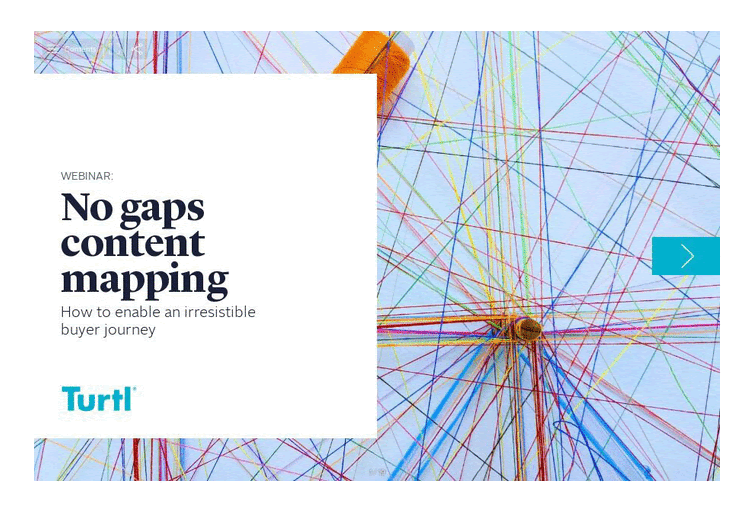
Aligning content with user intent
Content journey mapping considers the user’s intent at each funnel stage. For example, in the awareness stage, users may have a general problem or need and the content should focus on educating and creating awareness. In the consideration stage, users may be evaluating different options, so content can compare features, benefits or provide testimonials. In the decision stage, content can be more focused on specific offerings, pricing and incentives to encourage conversion.
Sequencing and timing
You can determine the sequence and timing of your content delivery by mapping content journeys. This ensures that users receive the right content at the right time to guide them through the funnel. It may involve creating a content calendar or automation sequences to deliver content in a structured and timely manner.
Personalization and segmentation
Personalizing content based on user attributes or behaviors enhances content journey mapping. This can involve segmenting users and delivering tailored content to specific segments, increasing relevance and engagement. Personalization can be achieved through dynamic content, email personalization or targeted advertising.
We conducted some research on data and personalization and delivered it in this Turtl Doc. It’s a pretty good read.
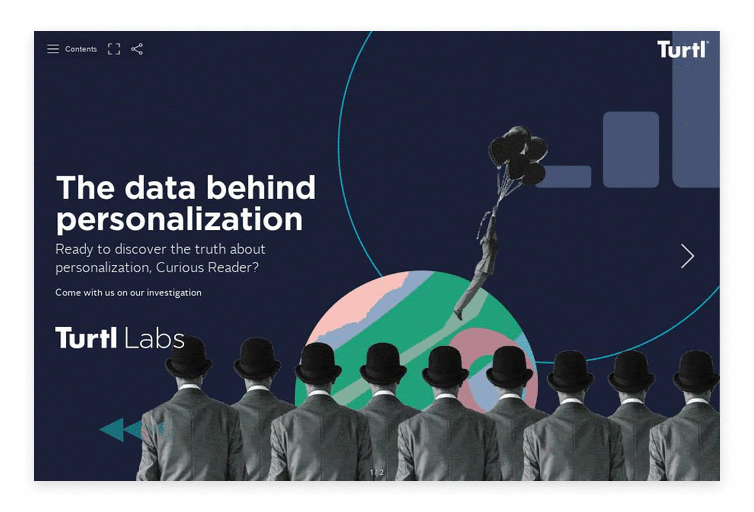
Tracking and optimization
It should be an iterative process. It’s important to track the performance of content at each stage of the funnel, analyzing metrics such as engagement, conversion rates and drop-off points. This data helps identify areas for improvement and allows for ongoing optimization of the content journey.
By mapping content to each stage of the funnel and aligning it with user intent, content journey mapping for funnels helps guide users smoothly through the conversion process. It ensures that the content is relevant, valuable, and effectively supports the user’s journey from initial awareness to becoming a customer and beyond.
FAQ: Is user experience the same as content design?
No – UX and content design aren’t the same, although they are closely related and often work together to create a cohesive user-centered experience.
As mentioned, UX design focuses on the overall experience that users have when interacting with a product, service or platform, while content design specifically focuses on the planning, creation and structuring of content to effectively communicate information and engage the target audience. Content designers are responsible for developing content strategies, analyzing audience research, creating and curating content, and ensuring that the content aligns with the overall user experience and business objectives.
How content design is different from UX
While UX design involves designing the overall user experience, content design is a subset that specifically deals with the creation and management of content within that experience. Content design plays a critical role in shaping the content elements of the user experience, ensuring that the information is presented effectively and meets the needs of the users.
In many cases, UX designers and content designers collaborate closely to ensure that the content and user experience work seamlessly together.
Both UX design and content design contribute to creating positive user experiences, but they focus on different aspects of the overall design process.
How good content design works
Good content design works by incorporating all of the above! User-centered principles, strategic planning and effective execution will create content that is valuable, engaging and aligned with the goals of both the audience and the organization.
A well-defined content strategy will guide the content creation process, ensuring that each piece of content has a purpose and contributes to the overall objectives – and helps to avoid waste and duplication. We show you how to create a B2B content marketing strategy that fills all of these objectives.
Clarity and readability are key to good content design. Content designers craft content that is concise, well-organized and easy to understand by using clear language, avoiding jargon and breaking down complex concepts into digestible chunks.
Content designers consider the user’s journey and design content that seamlessly guides users through the desired path, providing them with the information they need at each stage.
For great content design to work, everyone needs to be on the same page, so it’s important to have a collaborative and multidisciplinary approach. Good content design involves collaboration with various stakeholders, including subject matter experts, designers, developers, and marketing teams. By leveraging the expertise of different professionals, content designers ensure that the content integrates seamlessly with the overall user experience and aligns with the organization’s goals.
Good content design embraces a culture of continuous learning and adaptation. Content designers stay updated on industry trends, emerging technologies and evolving user preferences. They experiment with new content formats, test different strategies and adapt their approach based on changing audience needs and market dynamics. (One of the reasons why Winter is releasing further books – more research, changing needs, etc).
Sales and marketing teams can share knowledge and data for better audience understanding, and the authenticity of your messaging is more likely to win over the right audience.
It’s definitely worth thinking about how teams work together to deliver better content experiences for users. Sales and marketing teams can share knowledge and data for better audience understanding, and the authenticity of your messaging is more likely to win over the right audience.
There’s much talk about humanizing relationships in B2B, but the barriers to doing so across digital mediums are high. Typically, B2B relies on tempting opportunities through lead capture with the intention to build relationships through email nurture streams – no easy feat. If we learn more about user-centricity and design content more appropriate to needs, we may even beat the machine.
This report from Chief Marketer offers useful reading around getting more out of reader data and working collaboratively.
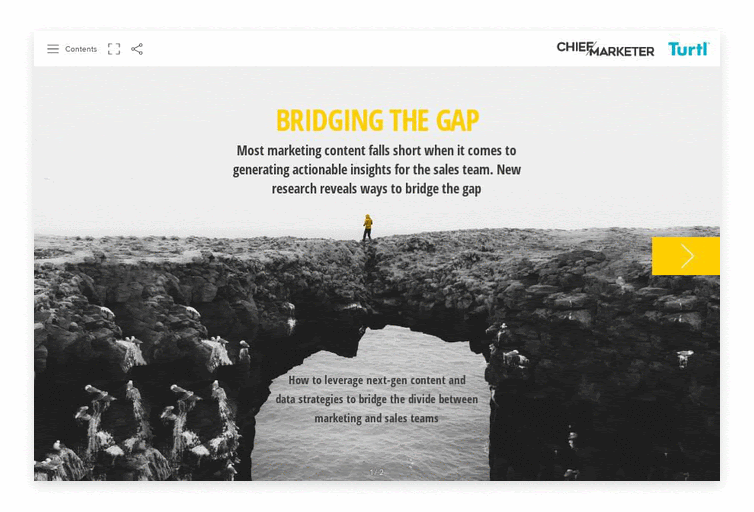
Today, it’s possible to send rich, meaningful content experiences to different audiences, and measure results. Amazon did exactly this, by successfully delivering tailored, interactive content to customers across the globe using Turtl.












